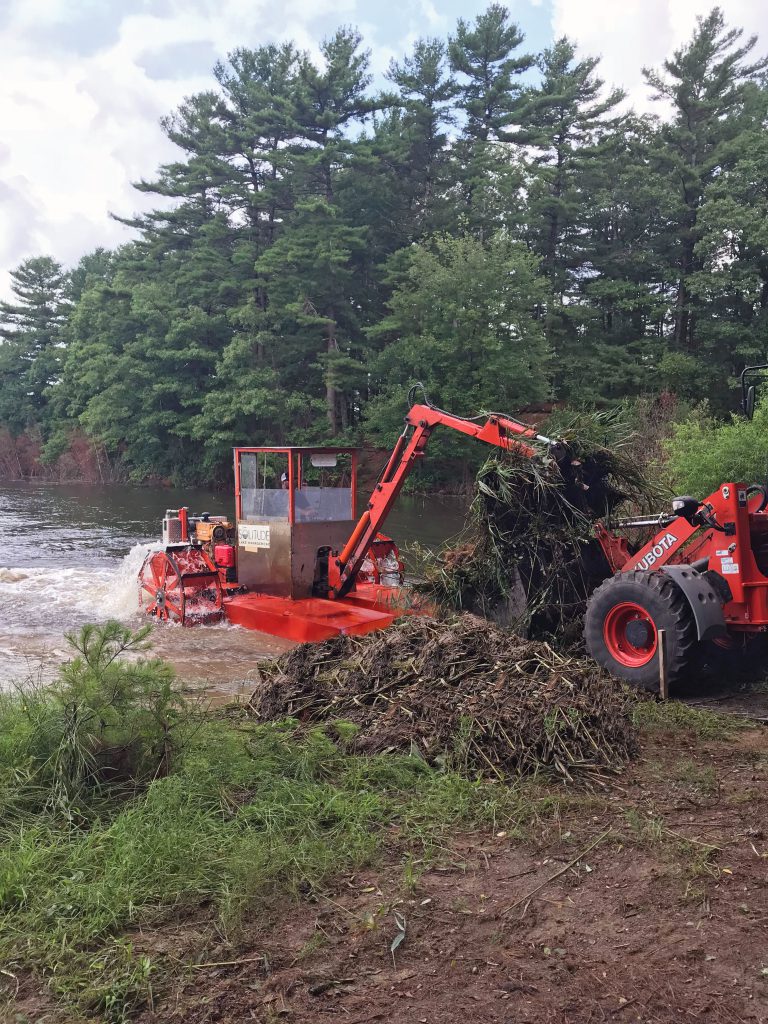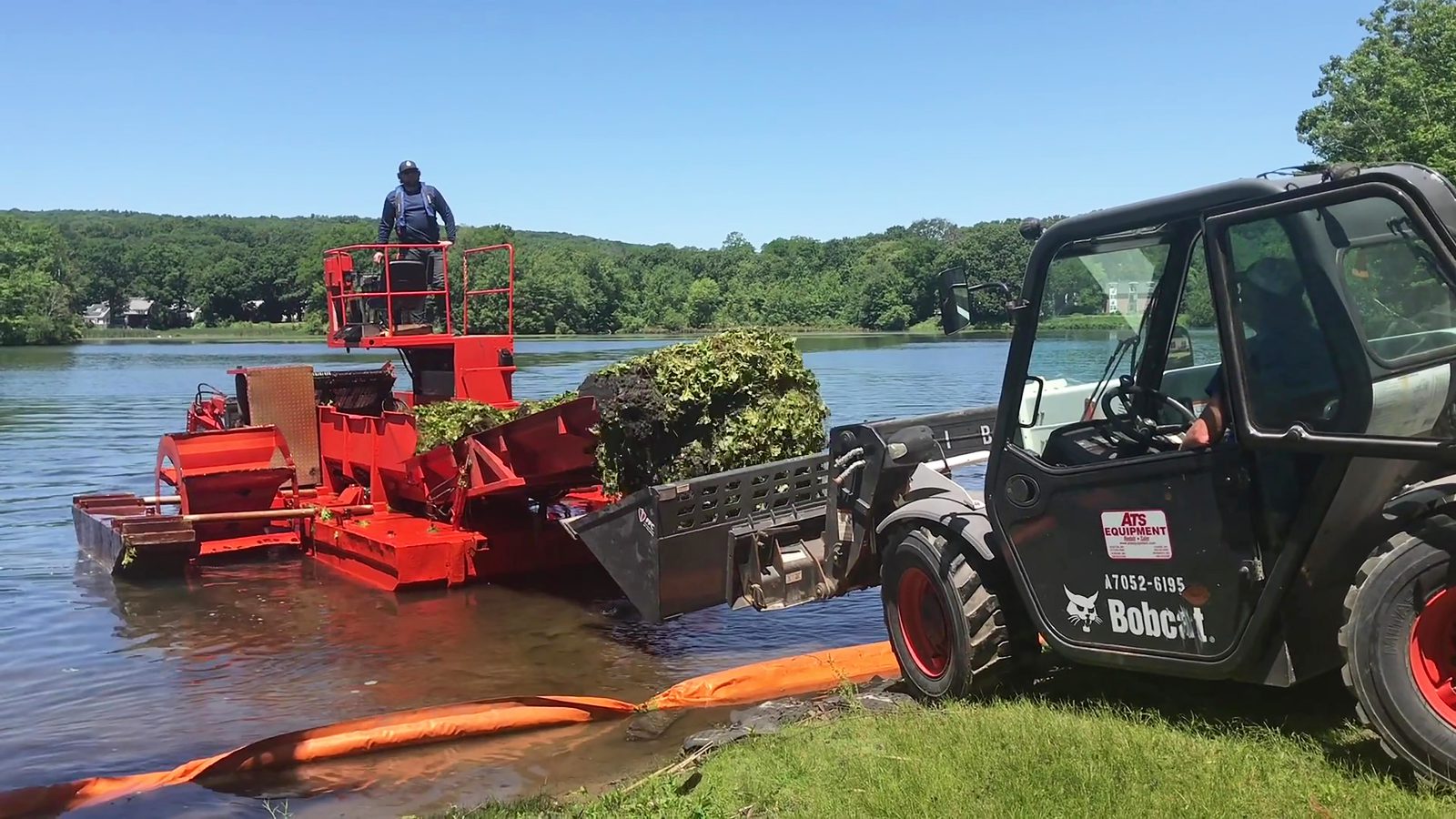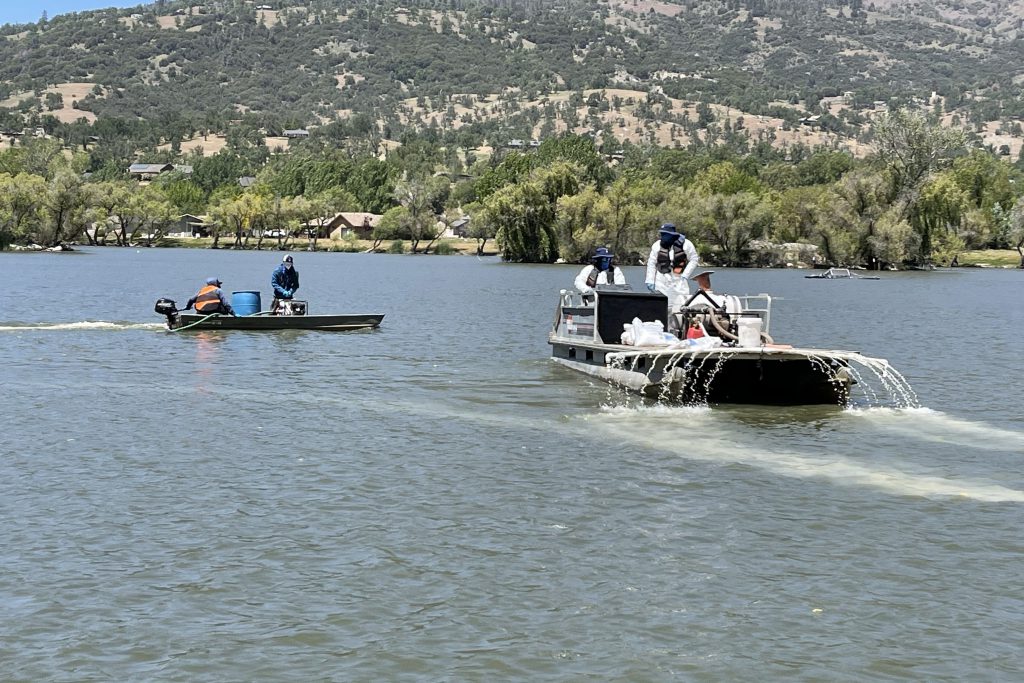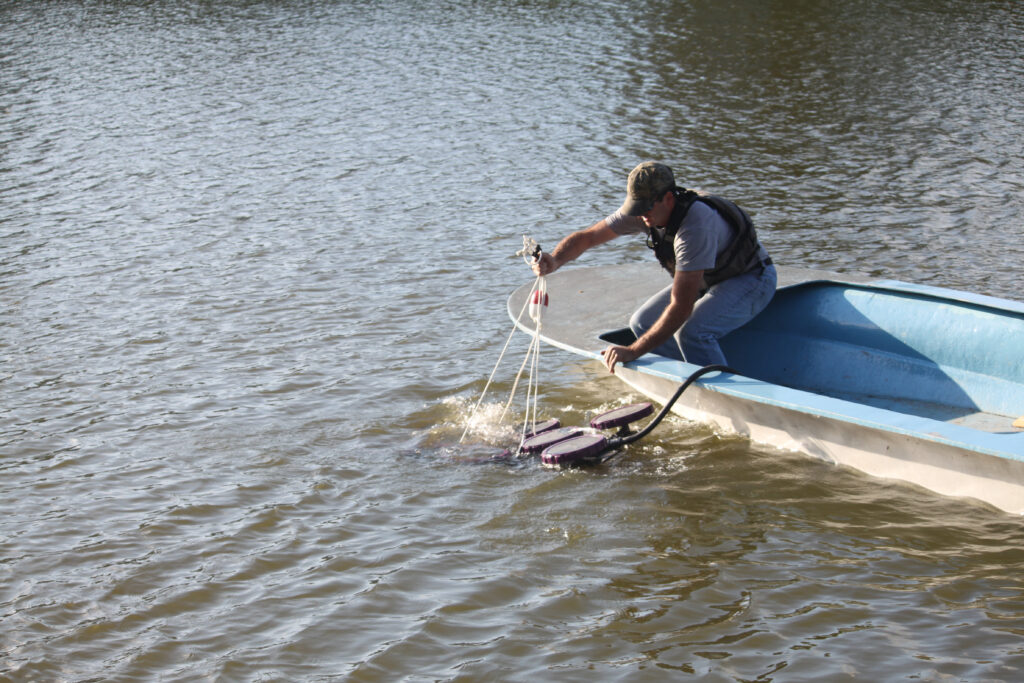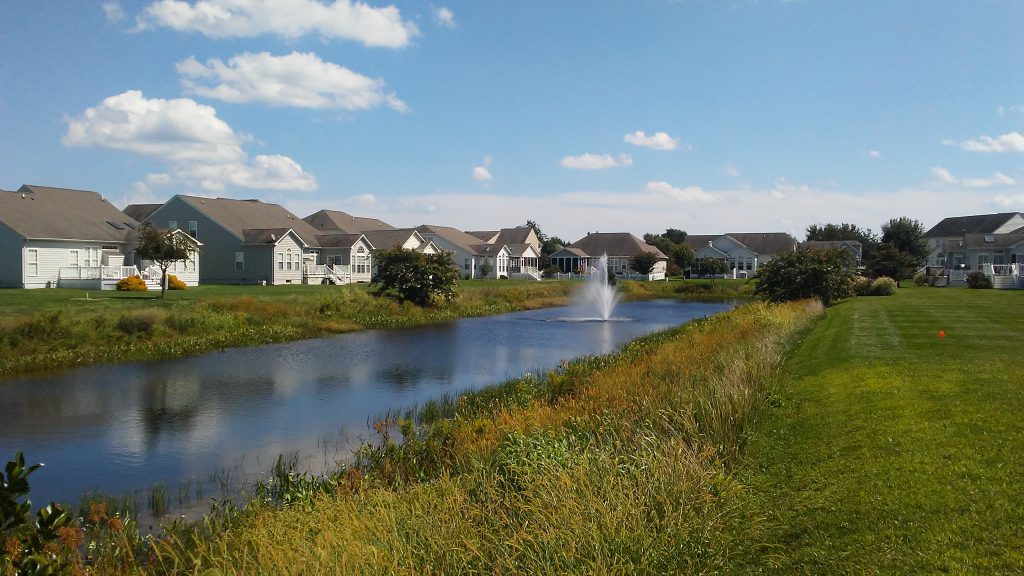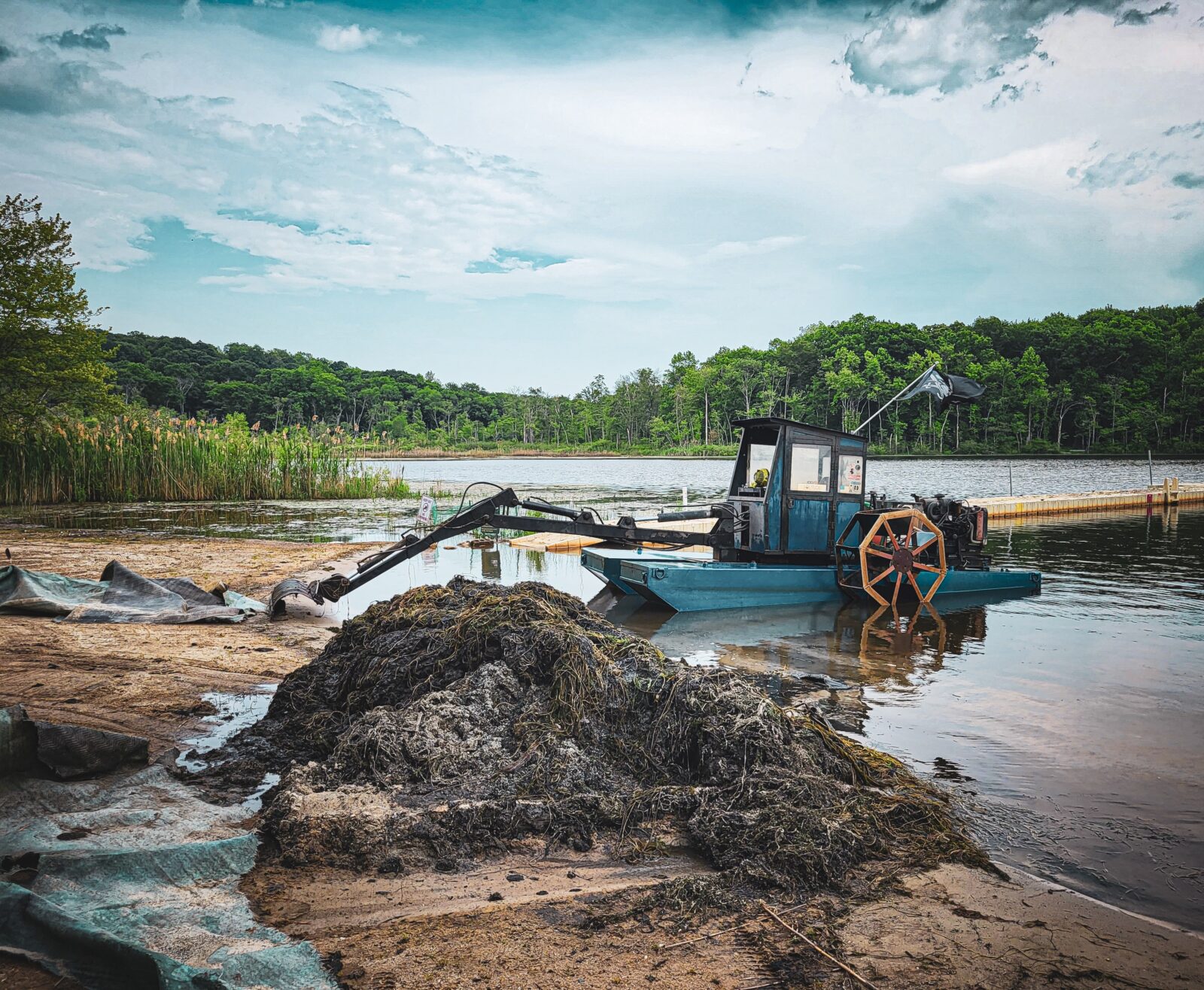
Hydro-raking: Is it a good solution for managing aquatic weeds?
Lakes and ponds are often at the center of outdoor activities like swimming, fishing, and boating. Few experiences can compare to the fun memories made on the water with friends and family. But when reflecting on these good times, the last thing you want to remember is the presence of stringy weeds that clog boat motors, entangle fishing lines, and wrap around the legs of swimmers. Luckily, with the right management solutions in place, nuisance aquatic weeds don’t have to overshadow your perfect day on the water.
Lake and pond managers have a variety of tools at their disposal to safely and rapidly eliminate nuisance weeds. EPA-registered herbicides are highly effective at interrupting this growth, but in nutrient-rich waterbodies filled with bottom muck and organic matter, the weeds are likely to return with a vengeance. An alternate solution that provides safe results with rapid turn-around is mechanical hydro-raking.
Watch the Hydro-Rake In Action!
What is the hydro-rake?
A hydro-rake is a specialized floating barge equipped with a clamshell rake. This attachment can extend into the water, excavating up to 500 pounds of bottom detritus in one scoop. Once deposited on-shore, the material is collected for off-site disposal or can be repurposed as part of a shoreline restoration project.
This method of physical removal makes hydro-raking an excellent choice for managing submersed aquatic weeds that often top out or form mats on the water’s surface, but are anchored to the bottom sediments. These include watermilfoil, hydrilla, mudmat, fanwort, and curly-leaf pondweed. In addition to removing the plant matter, the hydro-rake is capable of digging up entire root systems, helping to prevent future regrowth. Professionals recommend hydro-raking every 3-5 years to minimize any remaining root networks.
Alternatives to Hydro-Raking
Unfortunately, hydro-raking is not an appropriate solution for floating nuisance plants like water chestnut, giant salvinia, duckweed, water hyacinth, and water lettuce. Unlike the buried roots of submersed species, these free-floating weeds cannot be effectively removed by the clamshell rake. Furthermore, this method may increase the risk of plant fragmentation – some of the most invasive aquatic weeds can repopulate from any small fragments that are left behind. Instead, waterbodies affected by floating aquatic weeds are candidates for another physical removal solution called mechanical harvesting.
One of the most common reasons that stakeholders choose mechanical plant removal is to avoid pesticide use. However, hydro-raking is just one of many sustainable solutions to eliminate nuisance weeds – and is most effective when used as part of a comprehensive management program.
Prevent Aquatic Weed Growth By Managing Nutrients
In between hydro-raking jobs, beneficial biological bacteria can be applied to make the decomposition of bottom muck and debris more efficient. Nutrient remediation products like Phoslock, Alum (aluminum sulfate), and EutroSORB help complement these effects by “de-activating” excess nutrients in the bottom sediments and water column, removing them as a food source for nuisance weeds.
Stay On Track with Regular Water Quality Tests & Aeration
Consistent water quality testing helps Aquatic Experts keep track of nutrient concentrations, as well as other important parameters like dissolved oxygen (DO), alkalinity, conductivity, and pH. When water quality conditions are imbalanced, nuisance weed infestations are more likely to develop. Fountains and aerators are powerful tools to help stabilize healthy water quality while making the ecosystem more hospitable to beneficial microorganisms, fish, and native wildlife that help to keep weed growth in check.
Maintain A Healthy Vegetative Shoreline Buffer
Finally, it’s important to remember that water quality health starts on land. Eroded shorelines are a key indicator that sediment is accumulating at the bottom, creating a fertile bed for submersed weeds to grow. It’s crucial to repair aging shorelines and prevent future deterioration by cultivating a buffer of native vegetation around the perimeter. In addition to adding stability to the shoreline, beneficial buffer plants like pickerelweed, duck potato, blue flag iris, and native sedges and rushes help lessen the force of rainwater as it flows into the waterbody during storms. Through an Annual Management Program, stakeholders can gain access to these and other solutions, as well as the expertise of professionals who share their love for the water.
Enjoy Your Water with Natural Management Solutions
Overall, hydro-raking is a powerful tool for managing lake and pond weeds. While it may not be as effective for floating plants, it is a lasting, proven solution for controlling submersed weeds. With its ability to improve water quality and minimize weed growth, hydro-raking is a reliable choice to create a healthy, beautiful waterbody for all to enjoy.
SOLitude Lake Management is a nationwide environmental firm committed to providing sustainable solutions that improve water quality, enhance beauty and preserve natural resources.
SOLitude’s team of aquatic scientists specializes in the development and execution of customized lake, stormwater pond, wetland and fisheries management programs. Services include water quality testing and restoration, algae and aquatic weed control, installation and maintenance of fountains and aeration systems, shoreline erosion control, muck and sediment removal and invasive species management. SOLitude partners with homeowners associations, golf courses, private landowners, businesses and municipalities. SOLitude Lake Management is part of Rentokil, a leading business services company, operating across the United States, Canada and Puerto Rico.
For more information, visit SOLitude Lake Management at solitudelakemanagement.com, and connect on Facebook, LinkedIn and Twitter.








